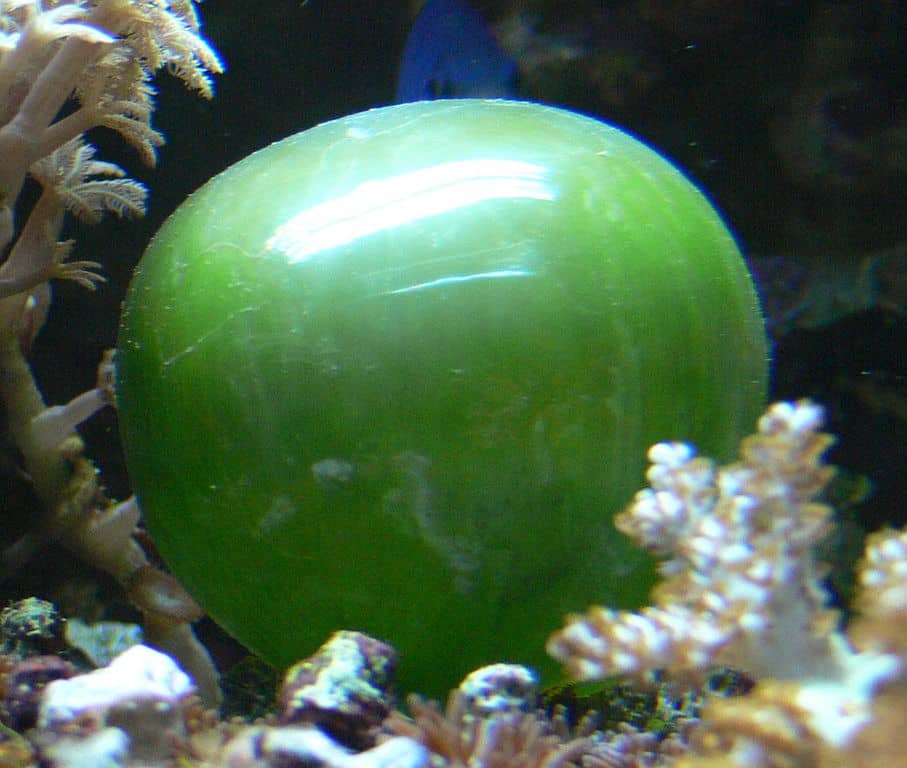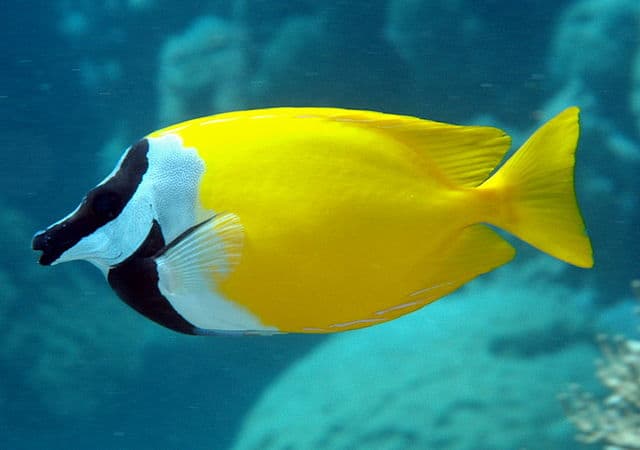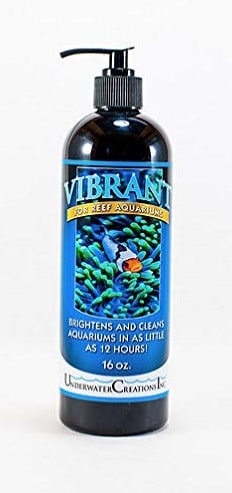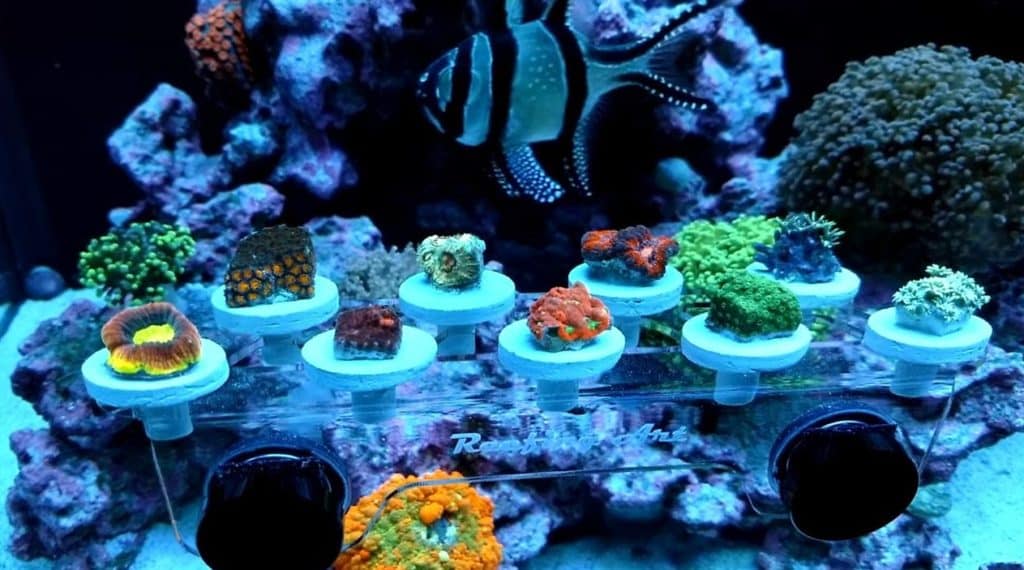You have been looking at your aquarium and you see a shiny pea-looking thing growing on your rocks. You think it looks cool and let it be. Diversity right! Then, next time you look there are a few more. Weeks later you are overrun with green peas! Now what!?
This was my introduction to Bubble Algae and I was very lucky because it almost caused my aquarium to over flow! I had been battling this stuff for months and one evening I lifted my aquarium canopy to feed my fish and my water was about to brim over the tank!
Bubble algae had grown (unknowingly) in the drain pipe to my sump and impeded its flow. More water was coming into my aquarium than was draining away!
What Is Bubble Algae?
Bubble Algae is a saltwater alga that grows in spherical or elongated shapes resembling bubbles. Bubble algae reproduce fast and bursting the bubbles may release spores that increase the reproduction rate and make it harder to remove. Emerald Crabs & Foxface Rabbitfish eat Bubble Algae.
Bubble algae are a single-celled organism found in every ocean in the world and gets its name from the Green Bubble that it creates. It can range in color from light green to dark green with every shade in between.
Lighting and the size of the bubble will affect its coloration. It can be found as just one bubble or an elongated tube but can rapidly spread to outbreak proportions.
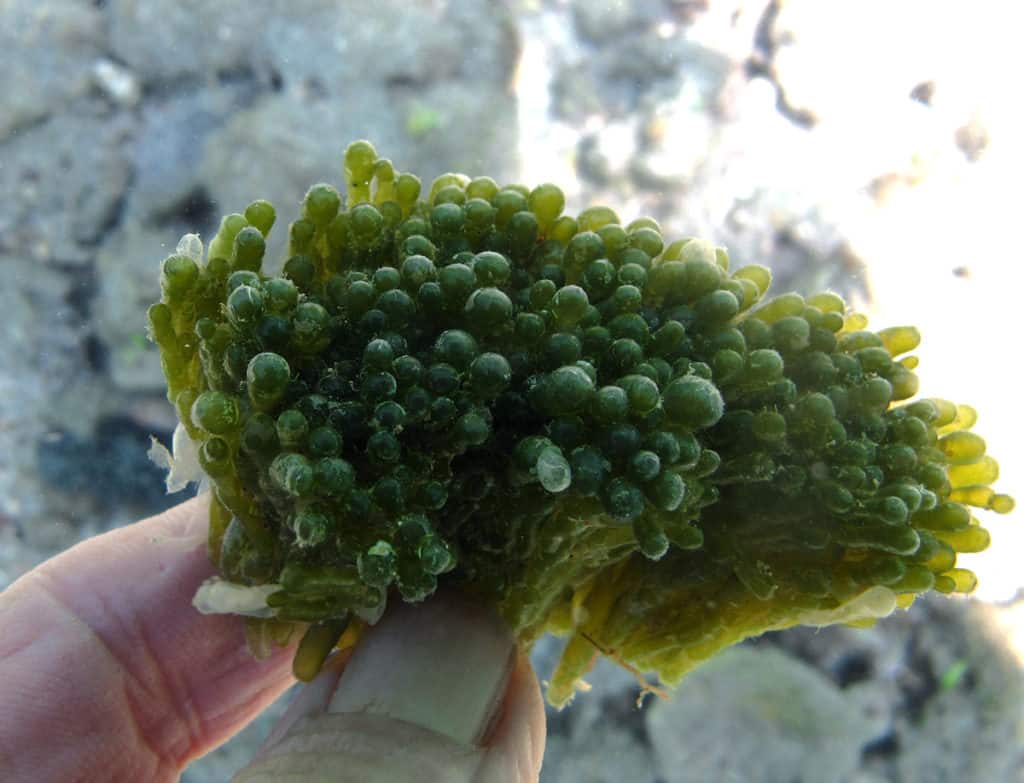
As the Bubble Algae spread in an aquarium, they can overtake corals, prevent pumps from turning and, like in my case, block pipes and cause overflows!
There are many, types of bubble algae that the aquarist may face but the most common is of the Genus Valonia and within that are 10 species according to AlgaeBase.org.
Some of the bubbles, if left to grow can reach very large diameters, which may appear interesting but are a disaster waiting to go off.
Where Does Bubble Algae Come From In An Aquarium?
Bubble algae is typically introduced into an aquarium via spores hiding on live rock or coral frag plugs. If these items have come from an aquarium containing Bubble Algae it is the most common method of transmission. Inspecting the live rock and frag plugs are paramount to prevent transmission.
When purchasing your Live Rock it can be very, very difficult to inspect every nook and cranny of every rock you place in your aquarium so diligent and close inspection is your first line of defense when looking at Live Rock. If ANY of the rock in the storage tank has ANY pests or nuisance algae growing then walk away! It is just not worth it!
One aquarist called ReeferAl on the forum, Reef Central conducted an experiment and left some Bubble Algae in complete darkness for 9 months and it was still alive and kicking, so algae hiding in deep holes in the Live Rock could be a possibility!
One way to avoid this possible entry is to start your aquascape with nothing but Dry Rock. This is what I did, for exact reasons like this, to prevent hitchhikers, but alas, Bubble Algae still found its way in – via a frag plug!

Frag plugs – They are also one of the biggest transportation means for pests and nuisance algae. I battled Bubble Algae, Aiptasia, and Bryopsis because of frag plugs!
When I first got into keeping corals I gave my new frags a visual inspection and dipped them, but apparently, this was not enough! It wasn’t until I did further research that I found this was where all my problems were coming from.
At this point, I changed how I now introduce new frags of coral to my system. I’ll cover my process later in the article.
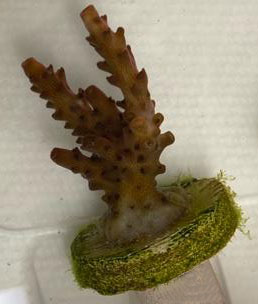
What Eats Bubble Algae?
Mithrax (Emerald Crabs) & Foxface Rabbitfish are the biggest eaters of Bubble Algae. Mithrax crabs will not be able to eradicate an infestation but are good for prevention. Foxface Rabbitfish will easily clear an infestation providing it can reach all the algae and your tank is big enough for them.
These are the two most efficient methods, but there are so many methods and they can ALL be hit or miss. Some have worked great for one person but then fail miserably for the next person.
Bubble Algae removal is purely a journey of trial and error, but unfortunately, it is going to be a battle, especially if you have a tank under 75 gallons!, as that it the smallest size tank a Foxface Rabbitfish can be housed in.
By far the best way to remove Bubble Algae is to remove the first bubble the second you see it. By catching it early you can hopefully prevent it spreading. By removing just one bubble each time you are in your tank you may remain lucky.
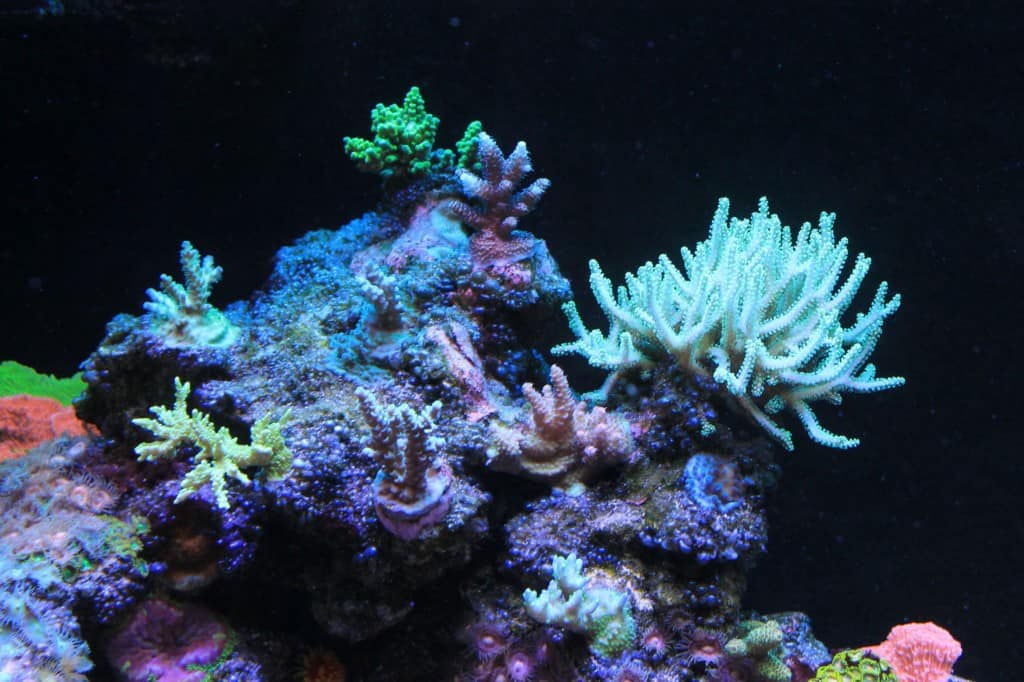
Do Not Burst The Bubbles! – This seems to be a general consensus within the hobby as bursting the bubble releases spores which allow the algae to spread and take hold in another part of your aquarium.
No matter how deep I have researched, I have never been able to dig up any scientific data to back this up. Any animal that eats the algae will burst the bubble!
Another theory is by getting the bubble while it is still young it has not had time to reach reproduction maturity – again no data to validate. But the best way to get them is to manually remove the whole bubble and as much of the stork as you can without popping it. A sharp flat blade screwdriver works well.
Below is a list of some of the animals that have worked great for others.
Emerald/Mithrax Crabs
Mithrax sculptus
The female Emerald crab seems to have had better success in the hobby with removing Bubble Algae. They seem to be less distracted – Go Figure 😉
Be sure to keep an eye on any Emerald Crabs you buy as they have been known to prey on corals and sometimes small fish. If you see any aggression – Remove them.
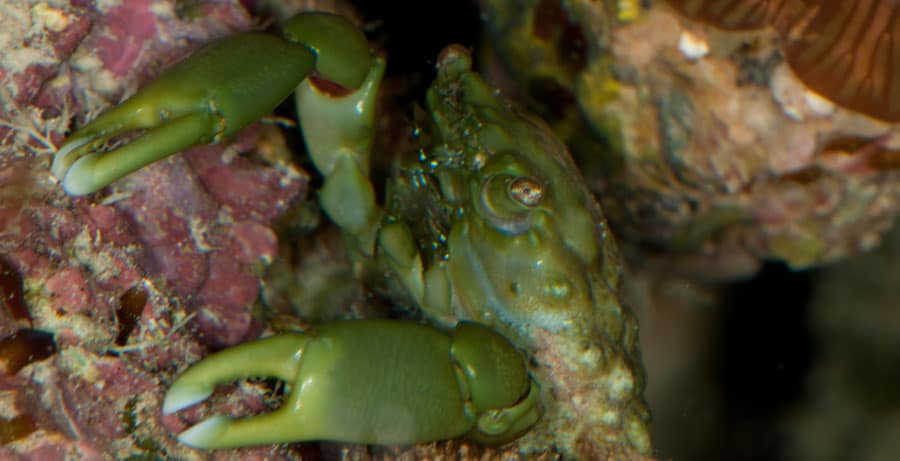
Foxface Rabbitfish
Siganus vulpinus
The Foxface Rabbitfish was what demolished my Bubble Algae outbreak.
You do require an aquarium of at least 75 gallons for these guys with lots of swimming space.
They can be hit or miss.
Tangs
Tangs are also a hit or miss fish. They are herbivores and some have mowed Bubble Algae like it’s their last meal, while others will not even look at it.
The main problem with using Tangs is they require large aquariums! You may be able to come to an arrangement with your local fish store to ‘Loan a Juvenile’. This is not something I only recommend as a very LAST RESORT, it could be the only thing to help you eradicate this algae.
Just be sure to return it and be very careful with stressing the Tangs as they are really prone to Ich!
Here is a selection of Tangs that have been proven to work in their owner’s aquariums throughout the forums. Again Hit or Miss for others!
Vlamingi Tang
Naso vlamingii
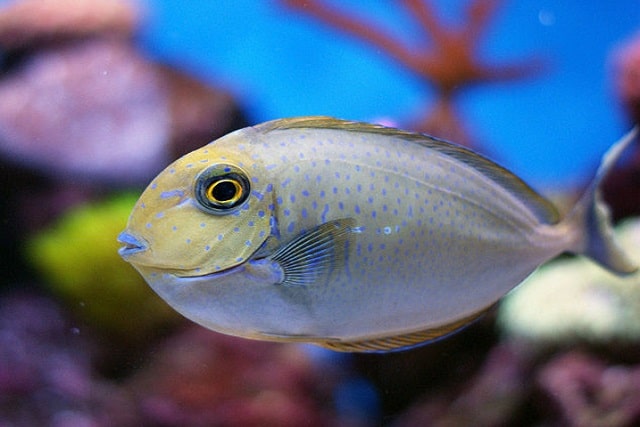
Min Tank Size = 150 Gal
Convict Tang
Acanthurus triostegus
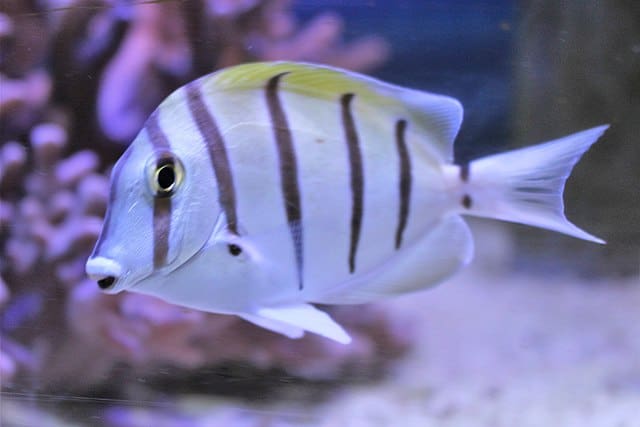
Min Tank Size = 90 Gal
Desjardinii Sailfin Tang
Zebrasoma desjardinii
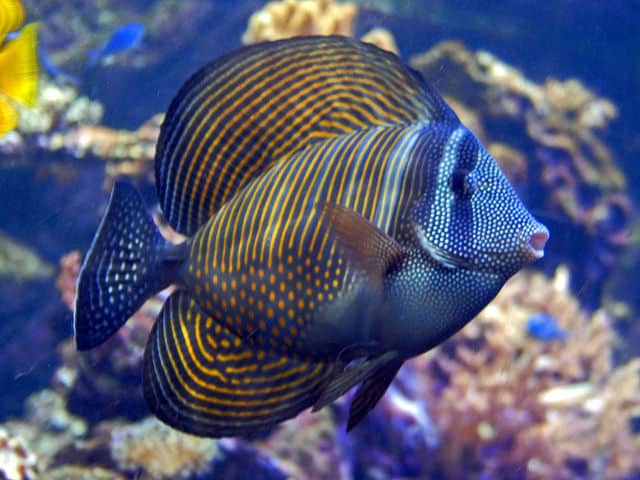
Min Tank Size = 50 Gal
Achilles Tang
Acanthurus achilles
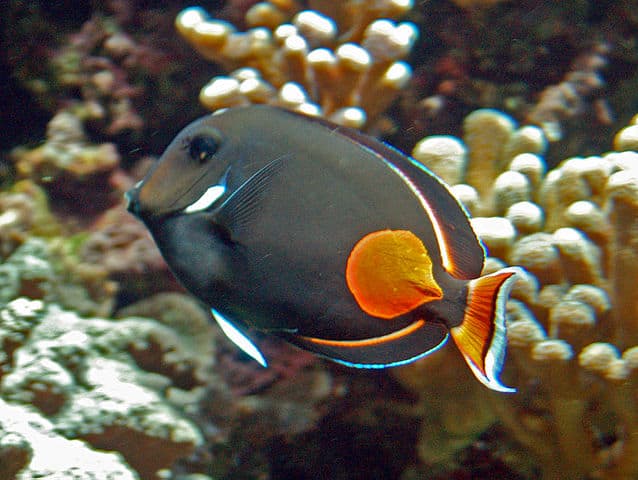
MIn Tank Size = 100 Gal
Powder Brown Tang
Acanthurus japonicus
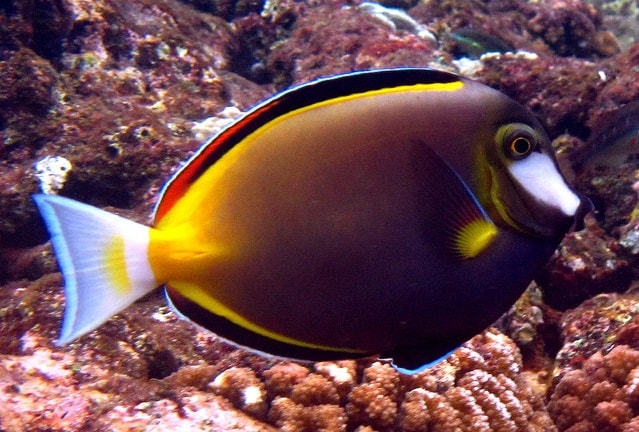
Min Tank Size = 120 Gal
Purple Tang
Zebrasoma xanthurum
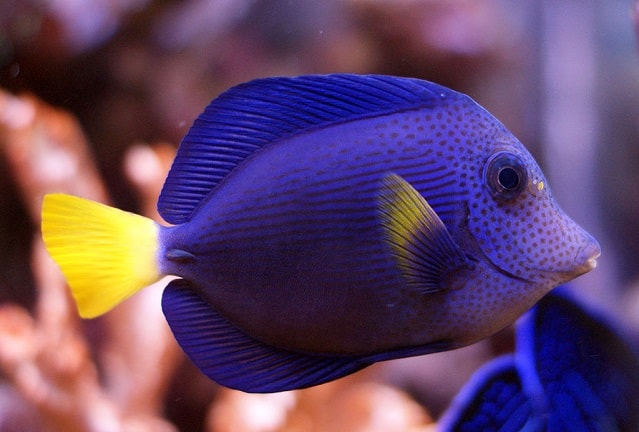
Min Tank Size = 100 Gal
Naso Tang
Naso Elegans
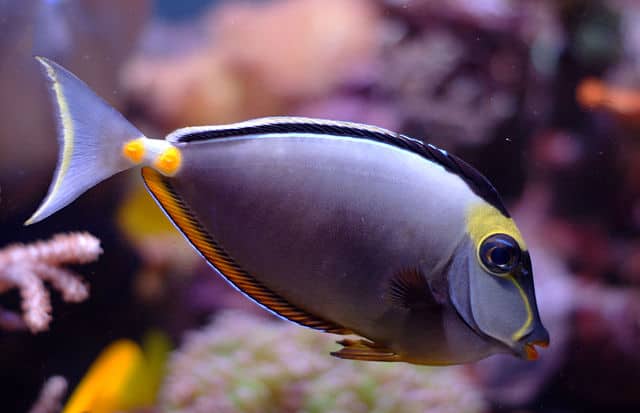
Min Tank Size = 130 Gal
Sohal Tang
Acanthurus sohal
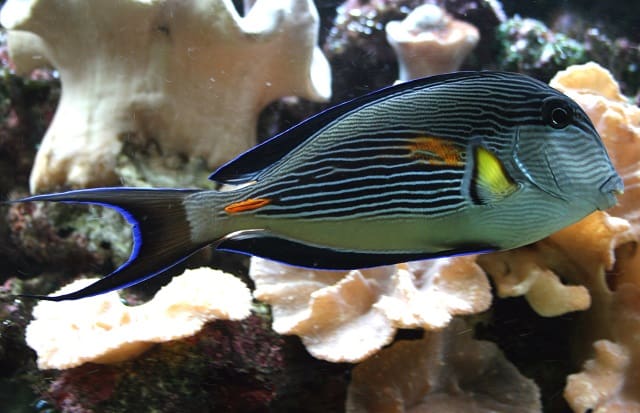
Min Tank Size = 150 Gal
For a great selection of these fish and Emerald Crabs please check them out
Here At Saltwaterfish.com
How To Get Rid of Bubble Algae?
There are 3 ways to get rid of Bubble Algae – Manually removing it, using Mithrax Crabs, Foxface Rabbitfish, or some Tangs, or by using Vibrant Aquarium Cleaner. Depending on your aquarium size and the severity of the infestation one or all of these methods may be required.
Vibrant Aquarium Cleaner
Many aquarists seem to be getting very good results from a fairly new product called Vibrant Aquarium Cleaner by Underwater Creations.
Vibrant uses multiple strains of bacteria to attack the algae from different angles. One of the bacteria strains targets the Nitrates and Phosphates that feed your algae and turn them into biomass to be removed via your Protein Skimmer or water changes.
This product is also designed to work on any problem algae, according to the manufacturer.
You can read the forum thread HERE on Reef2Reef where Jeff the owner comes on and joins in the conversation regarding it! – Cool!
“Vibrant is a true beast and we have not yet come across a algae that Vibrant can not beat out. Below I will list a general timeline of how fast Vibrant works on frequent algae strains that cause issues in reef aquariums”.
Jeff Jacobson
Cloudy/hazy Water– 1 dose
Diatoms – 1-2 doses
Cyanobacteria – (Yes, it will outcompete another bacteria) 1-5 doses
Dinoflagellates – 2-5 doses
Bubble algae – 3-8 doses
Hair Algae – 3-5 doses (depending on species of hair and how bad the infestation is)
Turf Algae – 8-20 doses ( again, depending on species and how bad the infestation is)
Bryopsis – 6-30 doses ( again, depending on species and how bad the infestation is)
Owner – Underwater Creations, Inc.
This great product is getting fantastic results and the many owners in the forums are confirming this!
Manual Removal
Failing any of the methods above your last option is manual removal. When you first notice a bubble this is how you need to remove it, but if you have a serious infestation then your arms are going to be in your aquarium, ALOT!
The trick to manual removal is to try and remove the bubbles without bursting them. The smaller they are the harder they are to burst.
One technique is to grab the bubble with your fingers and pull it off with as much of the root as you can. Many aquarists use a small piece of PVC hose to drain tank water into a bucket to suck up any removed bubbles or spores released from an accidental puncture.
For more stubborn bubbles, a flat-bladed screwdriver works well to prize them off the rock, then to scrape the area of the root and suck up the debris.
This method is going to take some serious effort and commitment, but over time your Bubble Algae infestation should diminish.
Are There Ways To Prevent Bubble Algae Returning?
Now that you have some ideas on possible ways to remove bubble algae we need to also look at ways to prevent it coming back! If you have spent the last 4 months diligently removing it by hand and it returns, it could push you over the edge to shut down your aquarium – That is something we cannot allow to happen!
Ways to prevent Bubble Algae from returning are to diligently inspect and quarantine any new frags or pieces of live rock, install a refugium and keep nitrate & phosphate low to remove its food sources and install an RO/DI water filter to prevent the introduction of its food sources.
Here are a few things to look into:
Nitrates & Phosphates
Nitrates and Phosphates are a primary food source for all plant life, including algae. By keeping these two parameters low you are helping to starve any algae before it has time to take hold.
Frequent water changes, good maintenance, minimal feeding, and minimal stocking all help to keep N & P low in your aquarium.
If you would like more info on Nitrate and Phosphate see these articles:
- Nitrates In A Reef Tank: 12 Easy Ways to Reduce Them!
- Reef Tank Phosphates: Easy Ways to Reduce Them!
Install a Refugium
A refugium is an area dedicated to growing beneficial algae out of sight of the main display tank. You can convert an area of your sump or purchase a Hang-On-Back refugium to create this space.
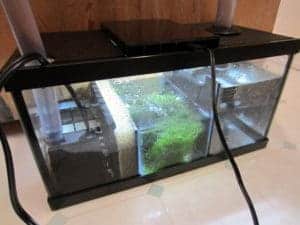
Filling the refugium with an algae called Cheatomorpha or ‘Cheato’ for short will out-compete your nuisance algae for all the nutrients they need to grow.
For more information on Refugiums and a device called an Algae Turf Scrubber see here:
Install an RO/DI Water Filter
The water you put into your aquarium is going to be one of the biggest factors to how much algae you fight, not just Bubble Algae, but all algae types!
The water you initially fill your aquarium with, do water changes with, and the water you use to top off for evaporation needs to be the highest purity you can get.
To do that I highly recommend you spend $100-$200 on an RO/DI water filter BEFORE you even purchase your aquarium!
RO/DI stands for Reverse Osmosis/De-Inoised Water and it is as clean as you can get. The system connects to your faucet and filters your water.
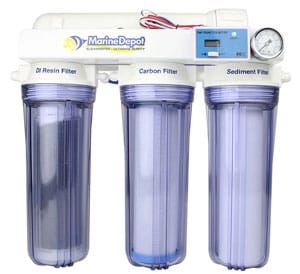
Find a Great One Here at Amazon.com
Water that comes out of your house tap can be full of Nitrates, Phosphates, Copper, heavy metals, odors, and other pollutants. City or well water will fuel algae in your aquarium.
For more information on RO/DI Water Filters see here:
Inspect/Replace Frag Plugs
Earlier you saw a picture of a coral frag with algae growing off the frag plug – This is one of the surefire ways to get an algae outbreak in your aquarium.
If you are able, remove the frag from the plug and super glue it to a brand-new frag plug. This will help keep your aquarium sterile. If the coral has encrusted over the plug then cut off the shaft of the frag plug with a pair of side cutters and scrape every piece of ceramic you can with a scalpel blade to remove any possible algae spores coming into your tank.
Then move on to dipping…
Diligent Coral Dipping
This is more to prevent the introduction of live pests into your aquarium, but as part of the coral introduction process, it is needed, especially with the step above.
Coral dipping is for another article that gives more in-depth information. You can find it here:
Quarantine The Frag
This is a great way to easily monitor any new coral and help keep it away from your rock to give you time to see if anything grows off it, other than the coral frag itself.
Using a magnetic frag rack like the one above, or even better, placing the frag in a frag tank will allow you to closely monitor each coral for 1-2 weeks to ensure nothing grows off it.
Keeping the new frags out of the way will help prevent any spread of algae and give you time to react and remove it if anything is found.
If you wish to know more about setting up a super simple Quarantine tank see here:
Quick Removal
Nipping the first signs of nuisance algae in the bud is the best defense you can employ to keep your aquarium in pristine order. Do some research into all the common types of algae you may come across in your aquarium so you can spot an intruder straight away.
Get it removed, get the area scraped/cleaned and monitor to ensure nothing else begins to grow.
To Finish
Unfortunately, even with the most diligent attention, Bubble Algae can make it into your aquarium. By far the best action to take is preventative measures, but if you do find some, get it out as soon as you can, failing that, get some animals to take care of it, or look at trying out Vibrant.
Darn, I wish I still had some Bubble Algae left as I would love to try it! I guess I’m going to have to find a fellow reefer who has some algae and do some tests!

